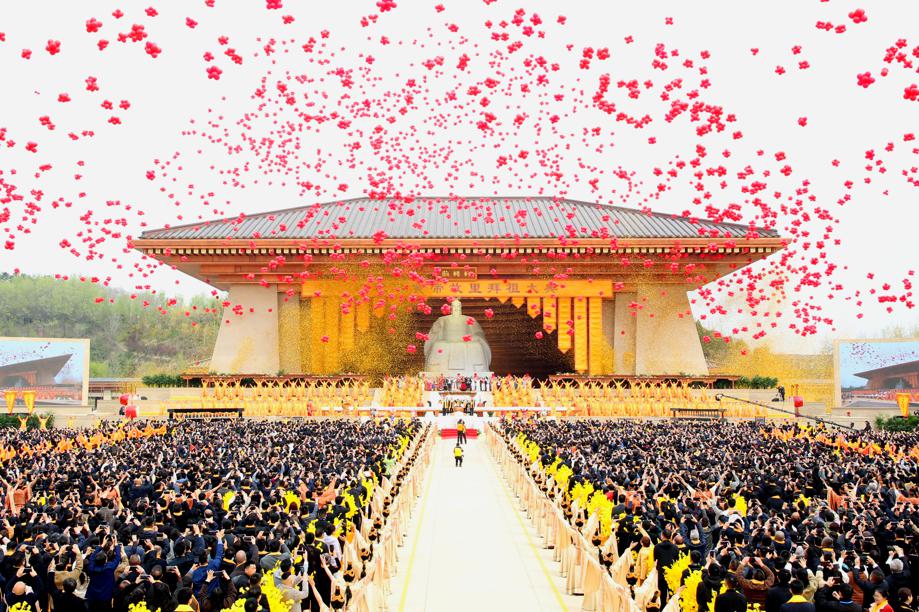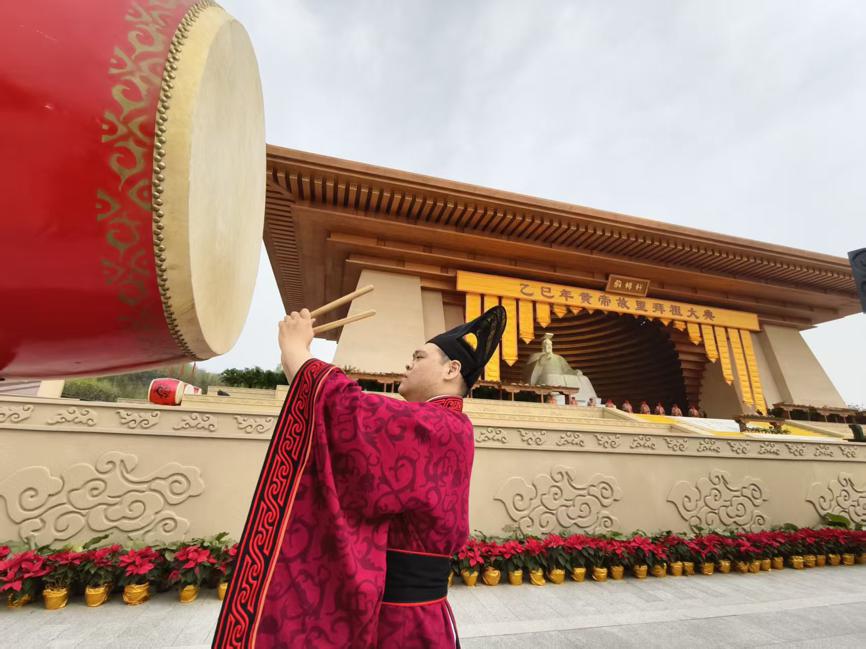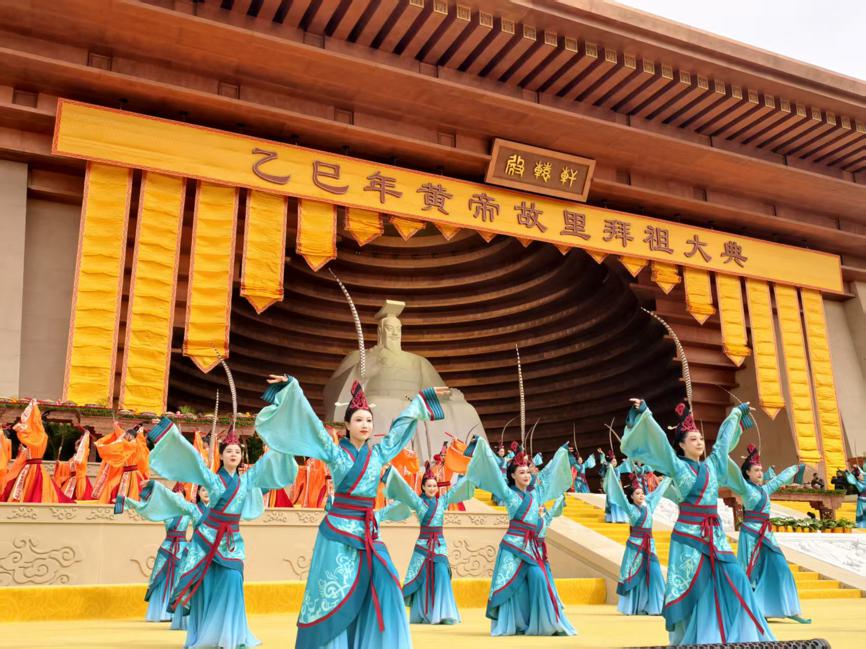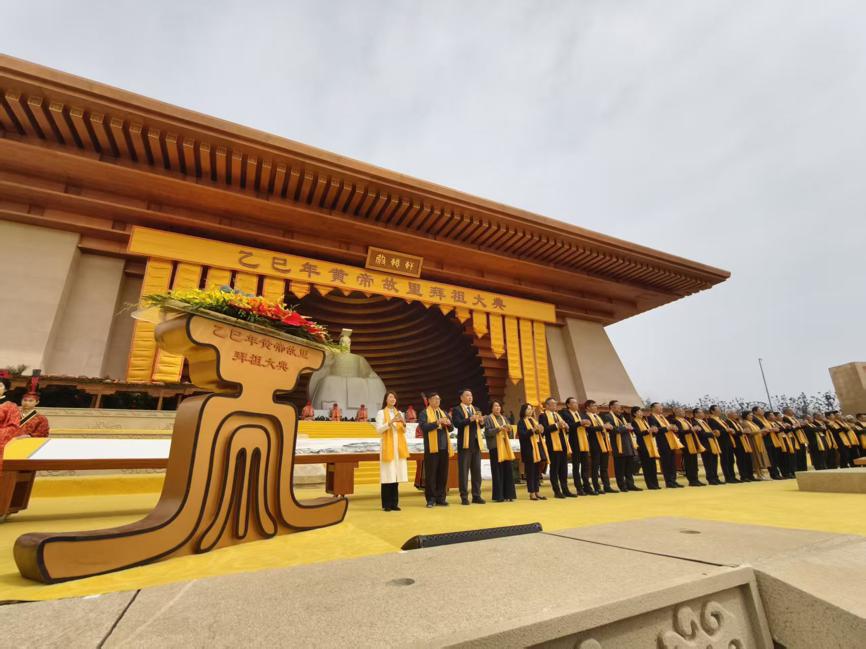
The 2025 Yellow Emperor Worship Ceremony, which celebrates the cultural ancestor of the Chinese nation, took place on Monday in Xinzheng, Henan province. [Photo provided for chinadaily.com.cn]
The 2025 Yellow Emperor Worship Ceremony, which celebrates the cultural ancestor of the Chinese nation, took place on Monday in Xinzheng, Henan province.
Xuanyuan, known as the Yellow Emperor, was revered as the legendary founder of Chinese civilization.

The 2025 Yellow Emperor Worship Ceremony, which celebrates the cultural ancestor of the Chinese nation, took place on Monday in Xinzheng, Henan province. [Photo provided for chinadaily.com.cn]
Under the theme "Same Root, Same Ancestor, Same Origin; Peace, Harmony and Amity", this year's ceremony showcased nine national intangible cultural heritage rituals, fostering connections among global Chinese communities online and offline.
The ceremony highlights the shared identity of the Chinese people, according to Huang Zhen, chairman of Zongheng Industrial and Commercial Research Institute in the Zhengzhou Airport Economy Zone.

The 2025 Yellow Emperor Worship Ceremony, which celebrates the cultural ancestor of the Chinese nation, took place on Monday in Xinzheng, Henan province. [Photo by Wang Xiuqing/For chinadaily.com.cn]
He expressed delight and excitement over the attendance of seven guests from Hong Kong, Macao and Indonesia and emphasized the deep respect for ancestors displayed during the ceremony.
Wong Shu-Pun, chairman of the Hong Kong Wong (Huang) Clan Association, shared a story of his first visit to Henan and expressed plans for a deeper exploration of the local culture in June. The association, founded 103 years ago, participates in international cultural exchanges and focuses on involving the younger generation in revitalizing the clan association.

The 2025 Yellow Emperor Worship Ceremony, which celebrates the cultural ancestor of the Chinese nation, took place on Monday in Xinzheng, Henan province. [Photo by Wang Xiuqing/For chinadaily.com.cn]
Chen Linchun, chief director of the ceremony, explained that the costume design drew inspiration from styles spanning the Western Zhou Dynasty (c.11th century-771 BC) to the Spring and Autumn and Warring States Periods (770-221 BC).
"The dance movements are primarily inspired by prototypes found in archaeological sites across Henan, such as stone carvings and reliefs, rooted in the region's historical and traditional culture," Chen added.